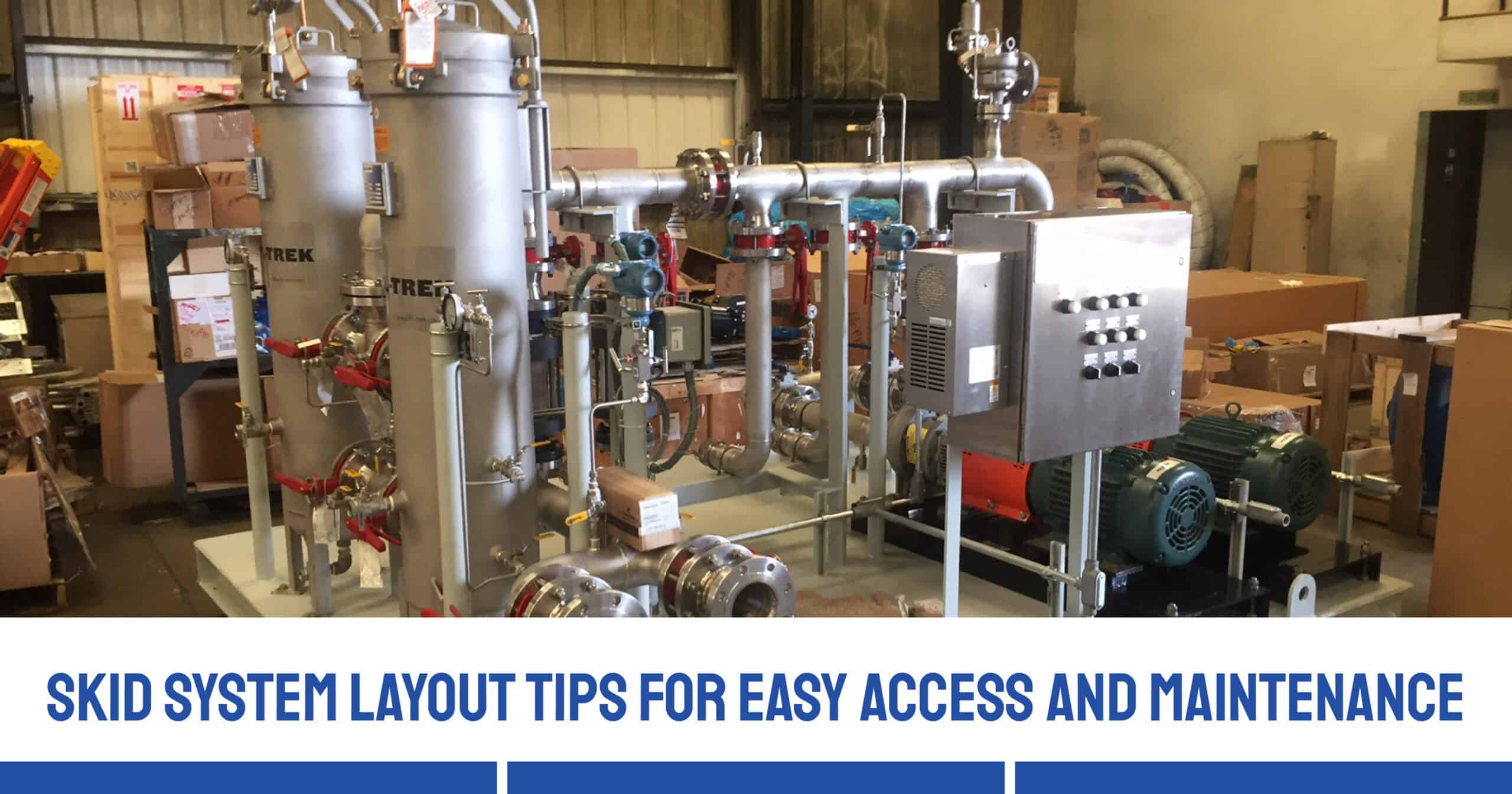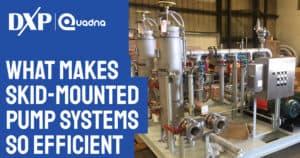Designing an industrial skid system is about more than just fitting pumps, motors, piping and controls onto a frame. The way a system is laid out has a major impact on its safety, efficiency and long-term serviceability. When accessibility is prioritized during design, operators can perform inspections, routine maintenance and repairs without unnecessary hazards or downtime. At DXP Quadna, we’ve designed many ready-to-use pump skid systems and we’ve seen firsthand how thoughtful layout choices extend system life and reduce ownership costs.
Why Accessibility Matters
Skid systems often operate in demanding environments where uptime is critical. If technicians can’t easily reach valves, gauges or pumps, even simple tasks like tightening a bolt or replacing a seal can become complicated and time-consuming. Poor accessibility also increases the risk of accidents, as workers may have to climb, overreach or improvise tools to reach critical components.
Designing with accessibility in mind ensures:
- Safer operations by reducing awkward or unsafe movements.
- Lower maintenance costs since technicians can complete tasks faster and with fewer resources.
- Improved reliability because easy access encourages regular inspections and preventative service.
Key Tips for Skid System Layout
1. Plan for Clear Walkways and Reach Zones
Technicians should be able to move around the skid and reach all critical components without obstruction. Leave adequate clearance around pump equipment, valves and electrical panels. A good rule of thumb is to allow at least 36 inches of clearance for walkways and service zones.
2. Group Service Points Together
Organizing service points—such as lubrication fittings, drain valves and gauges—into accessible clusters minimizes the time required for routine maintenance. Consider adding extended lines or remote-mounted panels to bring hard-to-reach instruments within easy reach.
3. Position Heavy Components Strategically
Pumps, motors and gearboxes should be placed where they can be removed with a crane, hoist or forklift without dismantling large portions of the skid. Avoid corner placements that make lifting and rigging difficult.
4. Use Modular Piping and Connections
Flanged connections and quick-disconnect fittings simplify component replacement and inspection. Modular piping layouts allow sections of the skid to be isolated without disrupting the entire system.
5. Keep Electrical and Mechanical Components Separate
Separating electrical panels from pumps and piping reduces the risk of accidental exposure to fluids during maintenance. It also makes troubleshooting and repairs more straightforward.
6. Label and Standardize
Clear labeling of valves, lines and instruments improves efficiency and reduces mistakes during service. Standardizing component types like valve handles, fasteners and gauges will simplify your inventory and training.
Long-Term Benefits
While designing for accessibility may increase upfront engineering effort, the investment pays off over the life of the system. Companies benefit from:
- Fewer unplanned shutdowns due to easier inspections.
- Shorter service windows, minimizing downtime.
- Reduced risk of workplace injuries tied to awkward maintenance tasks.
- Extended system lifespan thanks to consistent upkeep.
Accessibility doesn’t just make life easier for technicians—it directly impacts the bottom line by lowering total cost of ownership.
Partner with DXP Quadna for Smarter Skid Designs
At DXP Quadna, we specialize in custom-engineered skid systems designed for both performance and practicality. Our engineers take maintenance accessibility into account from the very beginning, ensuring your system is safe, efficient and easy to service. Whether you’re building a new skid or reconfiguring an existing layout, we work closely with you to design a solution that supports your long-term operational goals. Contact us today to learn more.





